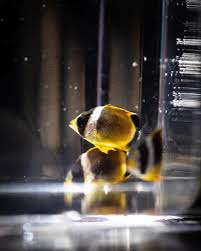 **The Evolution of Film Technology Over the Decades: A Journey Through Advancements in Cinematic Techniques**
**The Evolution of Film Technology Over the Decades: A Journey Through Advancements in Cinematic Techniques**
The world of cinema has undergone a remarkable transformation over the decades, with advancements in film technology, special effects, and visual storytelling techniques reshaping the way we experience movies. From the early days of silent films to the era of digital cinema, let’s take a journey through the remarkable evolution of film technology.
**1. The Silent Film Era (Late 19th Century – Early 20th Century)**
The birth of cinema can be traced back to the late 19th century when pioneers like the Lumière Brothers and Thomas Edison introduced the world to silent films. During this era, movies relied solely on visual storytelling, with intertitles providing dialogue and context. Innovations like the kinetoscope and the first public film screenings marked the beginnings of a new entertainment medium.
**2. The Introduction of Sound (1920s)**
The 1920s witnessed a groundbreaking shift in the film industry with the introduction of synchronized sound. “The Jazz Singer” (1927) is often credited as the first feature-length film with synchronized dialogue sequences, ushering in the era of “talkies.” Sound recording technologies and microphones became essential tools for filmmakers.
**3. Technicolor and Color Films (1930s – 1950s)**
The transition from black and white to color cinema was a significant milestone. Technicolor’s three-strip process, introduced in the 1930s, allowed filmmakers to capture vibrant and lifelike colors on screen. Iconic films like “The Wizard of Oz” (1939) showcased the possibilities of color filmmaking.
**4. Widescreen and Cinemascope (1950s – 1960s)**
To compete with the rise of television, the film industry embraced widescreen formats like Cinemascope. These formats offered a more immersive viewing experience, with wider aspect ratios that could capture grand vistas and epic scenes. Classics like “Ben-Hur” (1959) took full advantage of this technology.
**5. Special Effects and Practical Effects (20th Century)**
The development of special effects and practical effects revolutionized filmmaking. Innovations like matte painting, stop-motion animation, and miniature models allowed filmmakers to create stunning visual spectacles. “2001: A Space Odyssey” (1968) and “Star Wars” (1977) pushed the boundaries of what was possible on screen.
**6. Computer-Generated Imagery (CGI) and Digital Filmmaking (Late 20th Century – Present)**
The advent of CGI and digital filmmaking in the late 20th century transformed the industry once again. Films like “Jurassic Park” (1993) and “Avatar” (2009) demonstrated the capabilities of CGI in creating lifelike creatures and immersive digital worlds. Digital cameras and editing software revolutionized the production process.
**7. 3D and IMAX (21st Century)**
The 21st century brought advancements in 3D technology, offering audiences a new level of immersion. IMAX theaters and 3D glasses enhanced the cinematic experience, with films like “Avatar” (2009) and “Gravity” (2013) pushing the boundaries of visual storytelling.
**8. High Frame Rate (HFR) and Virtual Reality (VR)**
Recent developments in High Frame Rate (HFR) technology and virtual reality (VR) have added new dimensions to filmmaking. HFR films offer smoother motion and realism, while VR experiences allow viewers to step inside the movie itself, creating interactive storytelling opportunities.
In conclusion, the evolution of film technology has been a remarkable journey, with each decade bringing new innovations and possibilities to the world of cinema. As filmmakers continue to push the boundaries of technology, we can only imagine the exciting cinematic experiences that await us in the future. The art of storytelling through film remains a dynamic and ever-evolving medium, captivating audiences worldwide for over a century.










